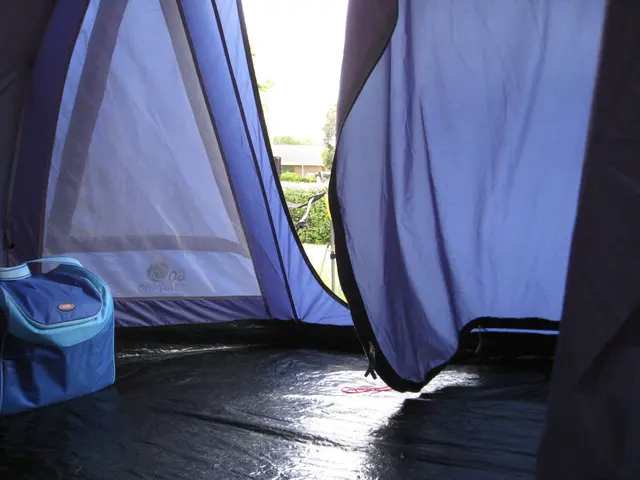Strategies for Organizing Warehouses in Fashion Companies
Efficient Warehouse Organization Boosts Fashion Brands' Productivity and Customer Satisfaction
Effective warehouse organization is crucial for fashion brands to optimize space, manage inventory, and improve customer satisfaction. Here are some key strategies that can help achieve these goals.
Demand Forecasting and Inventory Management
To avoid overstocking and reduce the risk of dead stock, fashion brands can use demand forecasting tools to predict sales trends. Implementing a First-In, First-Out (FIFO) system ensures older inventory is sold before newer items.
Space Optimization
Maximizing vertical space with tall shelving and mezzanine floors, using adjustable racks, modular bins, hangers, and flat shelves designed for specific apparel types can significantly increase storage capacity. Fast-moving items should be stored near packing stations, while slow movers can be placed in less accessible areas. Vacuum storage can be employed for bulky off-season items.
Warehouse Slotting and Picking Strategies
Adopting ABC velocity slotting places fastest-moving SKUs near packing/shipping stations, reducing picker travel time and labor costs. Using forward pick/reserve storage split holds smaller quantities in accessible forward zones and bulk inventory in reserve storage for efficient replenishment without disrupting picking.
Advanced Warehouse Management Systems (WMS)
Implementing a WMS integrated with AI enables rules-based picking methods like zone picking, batch picking, and wave picking. It also supports voice-directed or hands-free picking, dynamically re-slots fast movers, enforces quality control checks, and provides real-time visibility through dashboards.
Labeling, Coding, and Organization
Clear labeling and coding help identify item types, locations, and expiry dates if applicable. Organizing inventory by type, frequency of use, and storage needs streamlines access and reduces retrieval times.
Safety and Efficiency
Organizing aisles to prevent clutter and hazards, maintaining ergonomic picking locations, and utilizing modular, adjustable storage to safely accommodate different garment types and sizes ensure safety and efficiency.
Scalability and Customer Satisfaction
A scalable layout plan that can dynamically adjust to seasonal fluctuations and growing SKU assortments is essential. Improving picking and fulfillment speed directly reduces order errors and returns, enhancing customer satisfaction.
Innovative Solutions
Innovative solutions to maximize space without compromising accessibility and safety include optimizing vertical space with high shelving units, employing compact storage systems like mobile shelving, and regularly reassessing layout to ensure it meets current inventory needs.
Training Programs and Technology
Investing in training programs for employees can empower them with the skills needed to maintain an organized warehouse. Incorporating technology such as QR codes and RFID tags can expedite processing and minimize errors.
Compartmentalizing Inventory
Compartmentalizing inventory by dividing warehouse space or storage system into dedicated zones for specific categories, types, or functions of inventory speeds up the picking and packing processes.
Streamlining the Picking Process
Strategies such as grouping high-demand items together, implementing zone or batch picking, and utilizing technology to guide pickers can help streamline the picking process and reduce picking time.
Revolutionizing Warehouse Operations
Implementing a Warehouse Management System (WMS) like Uphance can revolutionize warehouse operations by streamlining inventory tracking and enhancing accuracy.
By implementing these strategies, fashion brands can improve their warehouse organization, leading to enhanced efficiency, productivity, and customer satisfaction. Examples like ASOS show how intelligent logistics software and automation can manage high fashion SKU complexity and peak demand efficiently.
- To cater to the diverse needs of their customers, fashion brands might consider expanding their offerings beyond just fashion-and-beauty products, including home-and-garden, food-and-drink, technology, and education-and-self-development items.
- Efficient warehouse organization can have a ripple effect, potentially impacting a fashion brand's overall lifestyle, as improved productivity and customer satisfaction could lead to a more seamless and enjoyable shopping experience.
- In line with the focus on innovative solutions, fashion brands could leverage educational resources and self-development programs to empower their employees, fostering a culture of continuous learning and driving further enhancement in warehouse operations and lifestyle management.






